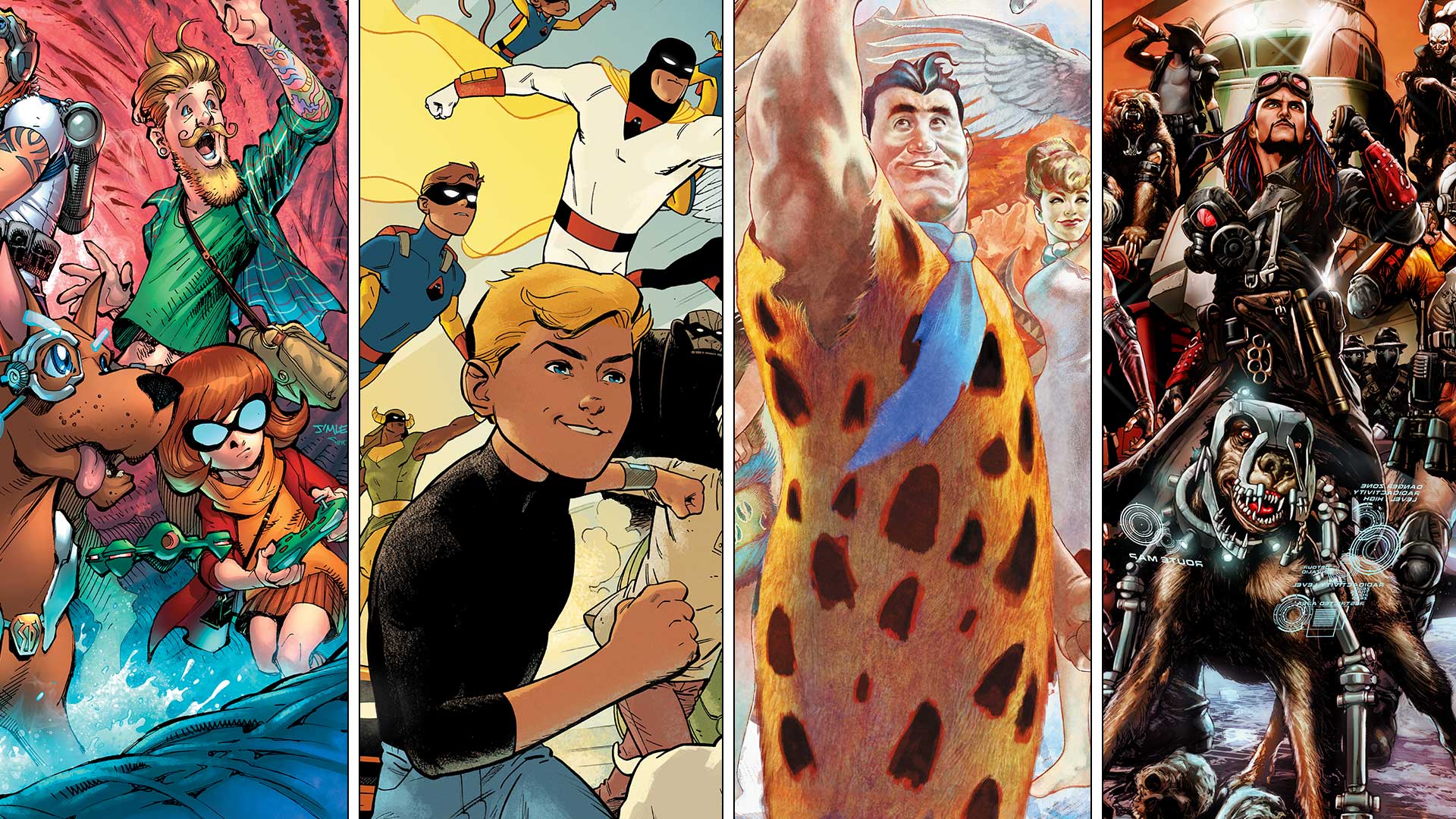Table of Contents Show
Anyone in this day and age will recognize early 20th century Hanna-Barbera cartoon characters like Scooby-Doo, Tom, and Jerry, and Fred Flinstone, to name a few. Animators at Hanna-Barbera produced iconic sitcom characters while working with a small production budget. Despite the fact that these cartoons reuse animation and exhibit limited movement, the Hanna-Barbera production company profited tremendously by the Saturday-morning cartoon era of the 1980s. Besides the ongoing Scooby-Doo franchise and the live-action Flintstones movies, most Hanna-Barbera characters never saw a 21st-century revival: Enter the Hanna-Barbera Beyond initiative by DC Comics in 2016.
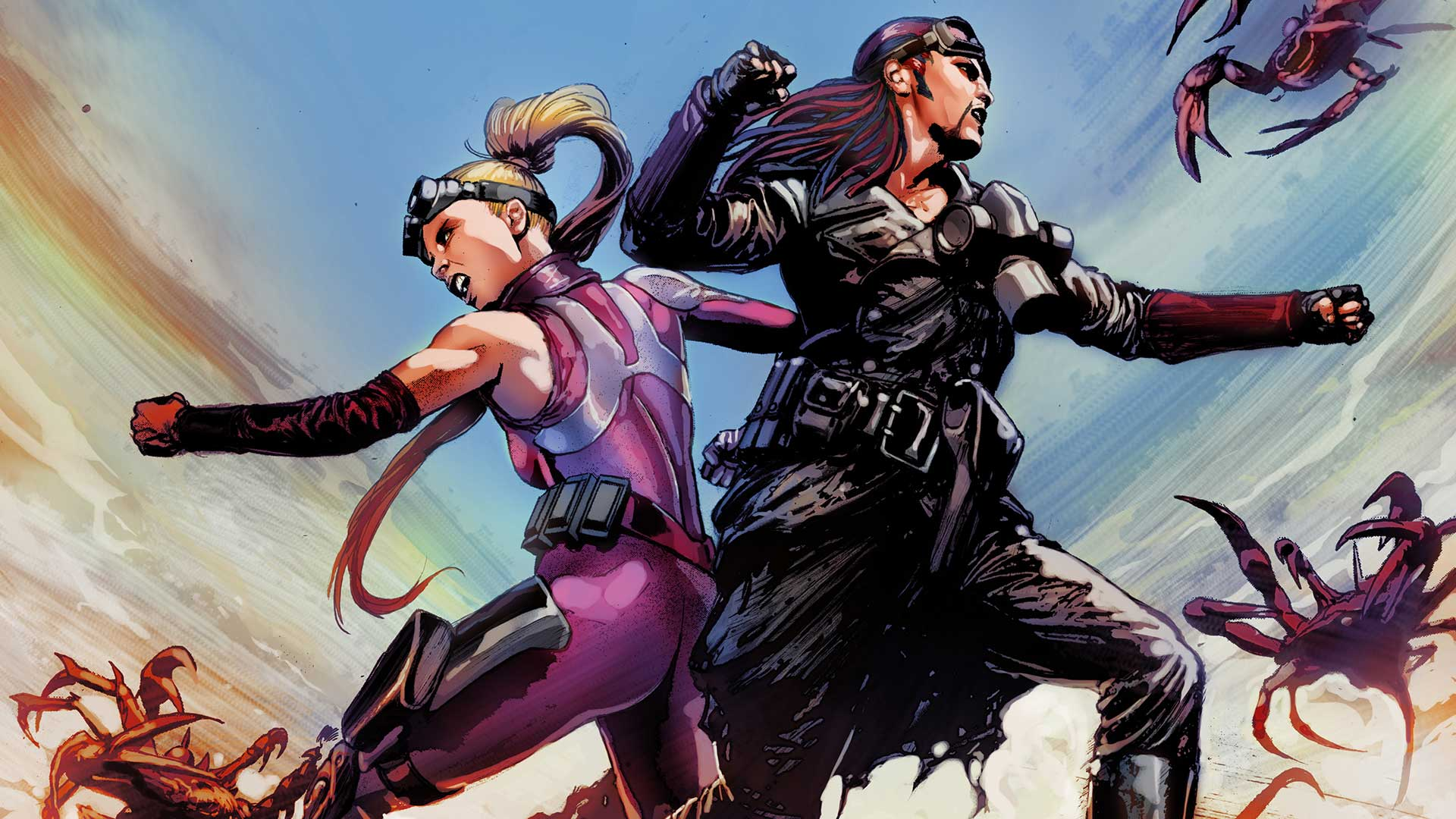
This two-year partnership with DC reshaped and resurrected old Hanna-Barbera cartoon characters. Besides modernity, the vast Hanna-Barbera Beyond comic franchise introduces historically comedic characters to dark, often dystopian, modes of existence. These adaptions offer provocative — and sometimes disturbing — new perspectives about The Jetson family, the Wacky Raceland competitors, and many other Hanna-Barbera characters. Whether you’re a casual comic reader or a fan of the old animated shows, discover the bizarre, phantasmagorical comic book world of Hanna-Barbera Beyond.
Scooby Apocalypse (2016)
Scooby Apocalypse (2016) is one of the darker comic collections in the Hanna-Barbera Beyond initiative. After Future Quest (2016), Scooby Apocalypse was the second series introduced in this DC Comics collaboration. Scooby Apocalypse subverts the mystery and monster tropes from the animated Scooby Doo, Where Are You? series and raises the stakes for the gang by integrating real monsters into this thirty-six issue run. This is by far the most drawn-out comic series in the partnership, as the story develops slowly in each issue. The cataclysmic, dystopian setting gives no respite to the gang or the readers throughout the long series.
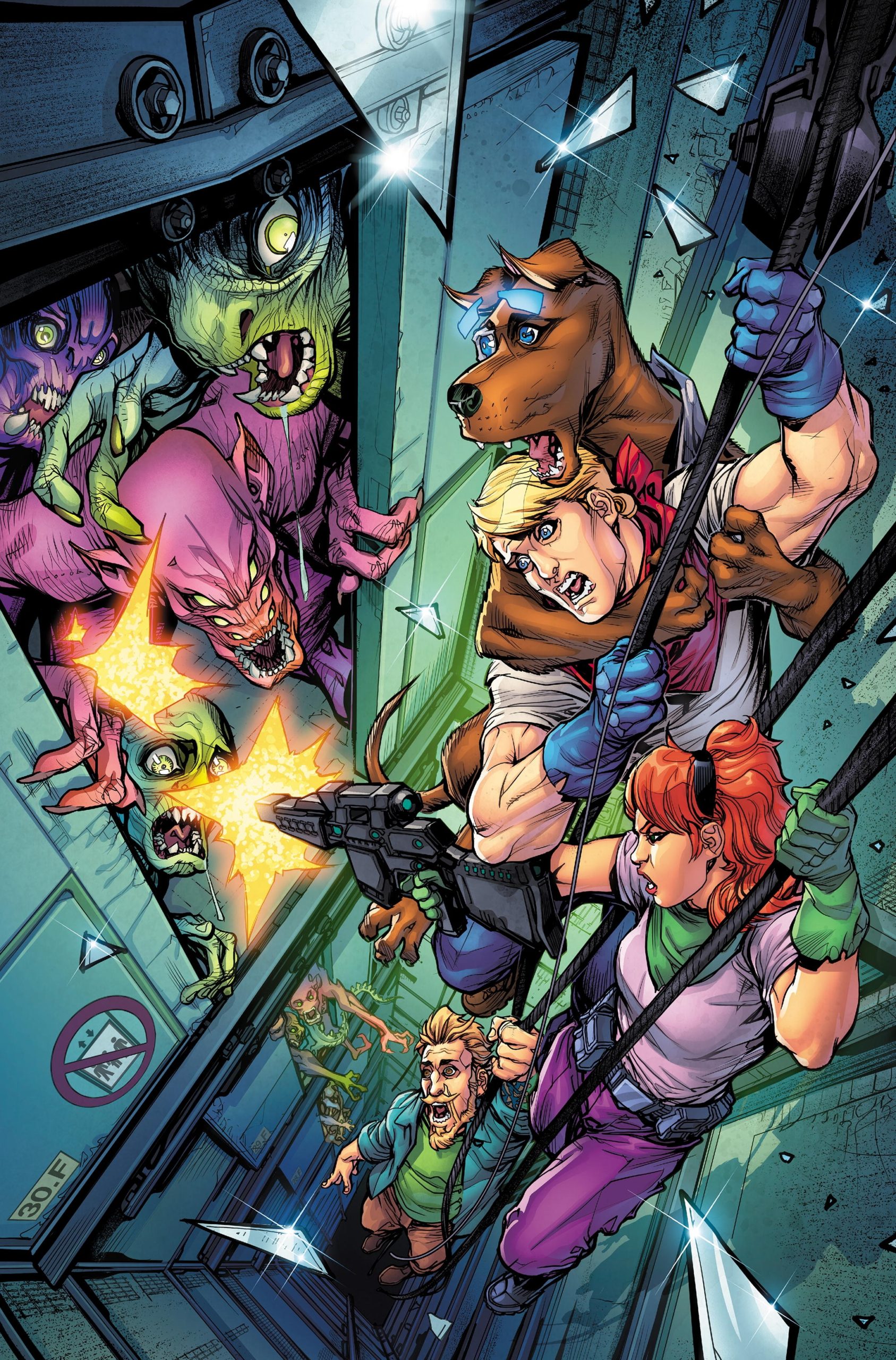
After Velma accidentally unleashes the apocalypse, she must band together with her company employee, Shaggy, his technologically upgraded dog, Scooby, a low-rated television show journalist, Daphne, and Daphne’s obsessive camera-man and college buddy, Fred. Scooby Apocalypse earned a “T” rating for its graphic depiction of blood, slight swearing, and horrifically fantastical artistic renderings of real monsters. Artists Wellington Alves, Dale Eaglesham, and Howard Porter perfectly redesigned these classic character looks for a dystopian world.
Although the dialogue becomes repetitive between issues and the pacing suffers at times, the skewed panels and gritty character designs give the comic some emotional complexity. DC writers, J.M. DeMatteis, Keith Giffen, and Jim Lee take the endearing qualities of your favorite cartoon characters and mesh them together with realistic flaws. Whether their new traits make them too unlikable to fully connect with is your decision to make. Like others in the Hanna-Barbera Beyond comics, these characters experience trauma and emotional instability. Thematically similar to Scooby-Doo! Mystery Incorporated, Scooby Apocalypse emerges as a fun dystopian narrative.
Wacky Raceland (2016)
The initial 2016 launch of the Hanna-Barbera Beyond comic franchise ended with a gory, deranged, yet artistically stunning series, Wacky Raceland (2016). This reimagined version of the laughably simple 1968 Hanna-Barbera cartoon series, Wacky Races, plunges the racers into a decimated dystopia. All the original racers and their cars from the cartoon appear with hyper-realistic character designs conceived by Leonardo Manco. Many readers accurately compare Wacky Raceland‘s theme and art style to the Mad Max films. Writer Ken Pontac‘s competitors engage in some banter, but these definitely aren’t the Wacky Racers you (might) remember.
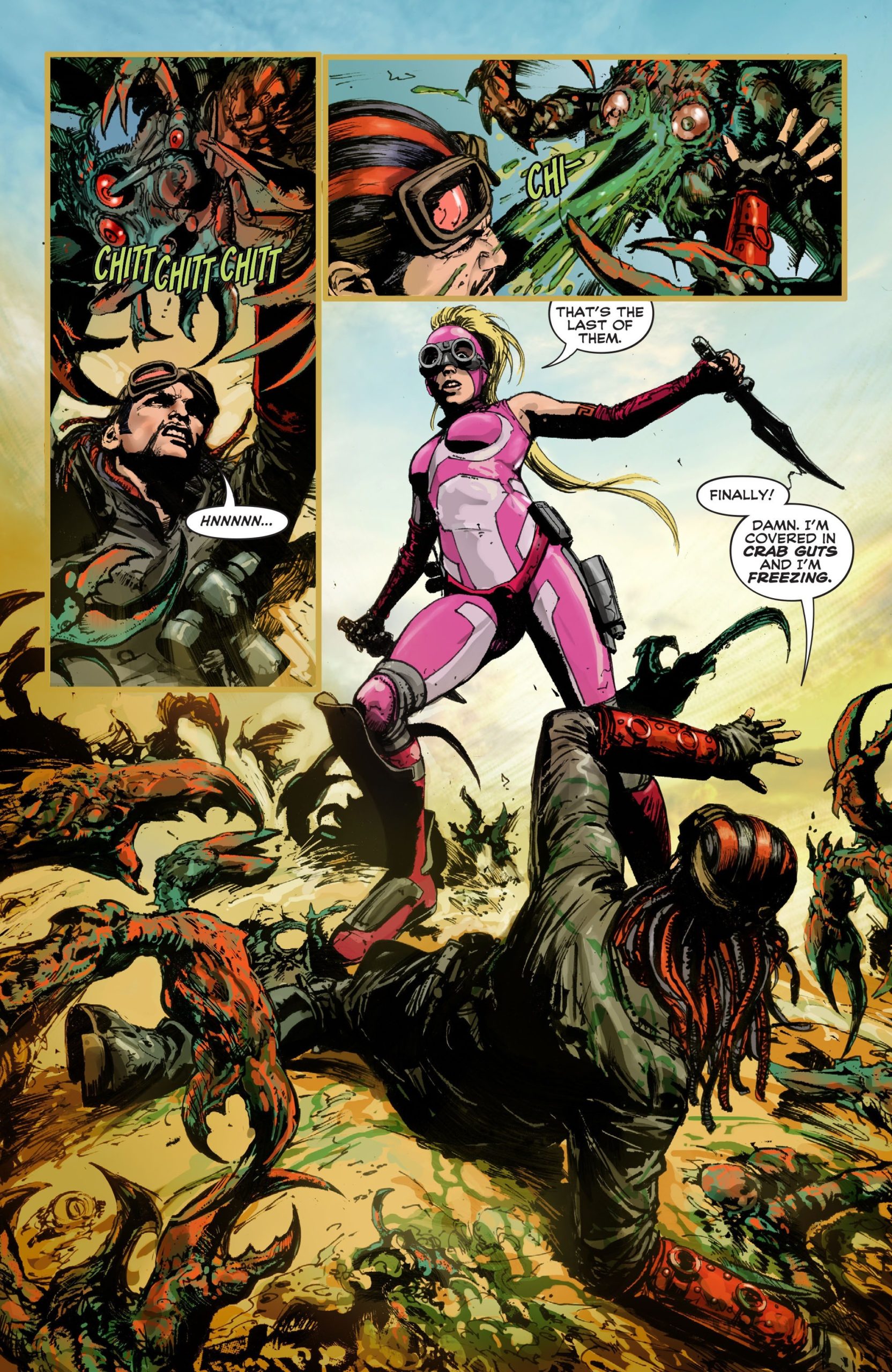
In Wacky Raceland, a cataclysmic event has transformed Earth into a desert wasteland replete with bloodthirsty mutants and nanotech dust storms. The announcer from the cartoon is an untethered, unseen voice who communicates only in gold dialogue boxes. Additionally, the god-like announcer functions to save the specific racers from the apocalypse, transform their cars into sentient beings and promise the winner of the final race access into an unscathed Utopia.
Wacky Raceland is insane. The classically clueless Penelope Pitstop is reimagined as a fierce warrior. Dick Dasterdly confronts extreme emotional turmoil after the death of his family. Blubber Bear has presented as a human sporting a bear head after a tragic accident. The slightly convoluted narrative provides compelling character backstories and attempts to explain their motivation for engaging in perpetual races. The violence in these comics adds shock value to the gruesome dystopian environment. Mentally prepare yourself before you plunge into this Hanna-Barbera Beyond series.
The Jetsons (2017)
Hanna-Barbera’s 1962 animated sitcom, The Jetsons, took the nuclear family and blue-collar workforce tropes and applied them to the Jetson family in outer space. The cartoon gave no real reasoning behind the futuristic space setting. Additionally, the show relegated Jane’s status to spousal subservience and portrayed Judy as lacking any sign of intelligence. Fortunately, the Hanna-Barbera Beyond comic enterprise wonderfully reworked the cartoon late in 2017. The Jetsons (2017) comic series contains only six issues, but writer Jimmy Palmiotti transforms the simplistic premise into a surprisingly dark, pro-feminist narrative.
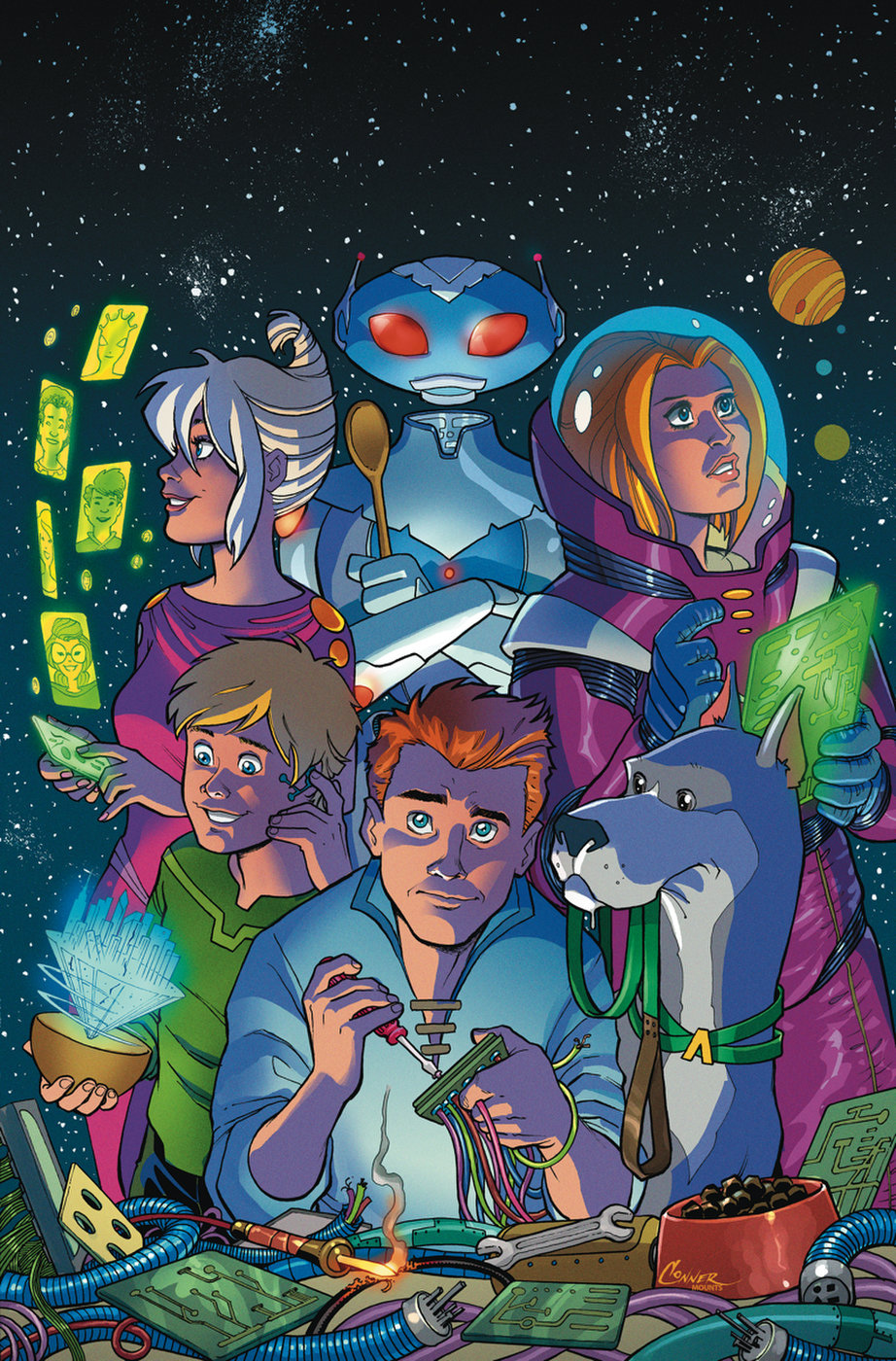
Without revealing too much of the high-concept plot, The Jetsons comics revolve around the family and their pivotal role in deciphering how to prevent a meteor from destroying all life on their planet. Readers get a thoughtfully crafted explanation for why the Jetson family resides in space. Curious teenager Elroy explores the ruins of a water-submerged, dystopian Earth that hauntingly destroyed most of humanity. The stakes have never been higher for this space-suburban family, and it works wonderfully. Artist Pier Brito brings the story to life, vividly depicting the hyper-realistic characters and detailing the unique above-Earth world.
While the comic maintains a much lighter tone than Scooby Apocalypse, the reality of the Jetson family proves far grimmer than seen in the cartoon series. Adding to its modernized appeal, Jane is a lead scientist, designated with leadership in enacting a plan to save humanity. Judy, now in college, is a film major with a thoughtful understanding of the world she lives in. The Jetsons emulates a Black Mirror mood. While the plot wraps up neatly, I do wish Hanna-Barbera Beyond had greenlit more issues of this gorgeously drawn comic series.
The Ruff And Reddy Show (2018)
If you’ve never heard of The Ruff and Reddy Show cartoon, you’re not alone (excluding myself, who watched every Hanna-Barbera show ever made as a kid). Similar to the animated show’s theme, Hanna-Barbera Beyond‘s six-issue, The Ruff and Reddy Show (2018), first introduces Ruff and Reddy as two 1950s television comedians. However, the comic takes Hanna-Barbera’s first cartoon sitcom stars and writer Howard Chaykin tells the story of Ruff and Reddy’s fall from stardom in the cutthroat world of acting. No prelude or former memories of the predecessor cartoon series is needed to enjoy this twisted spin-off narrative.
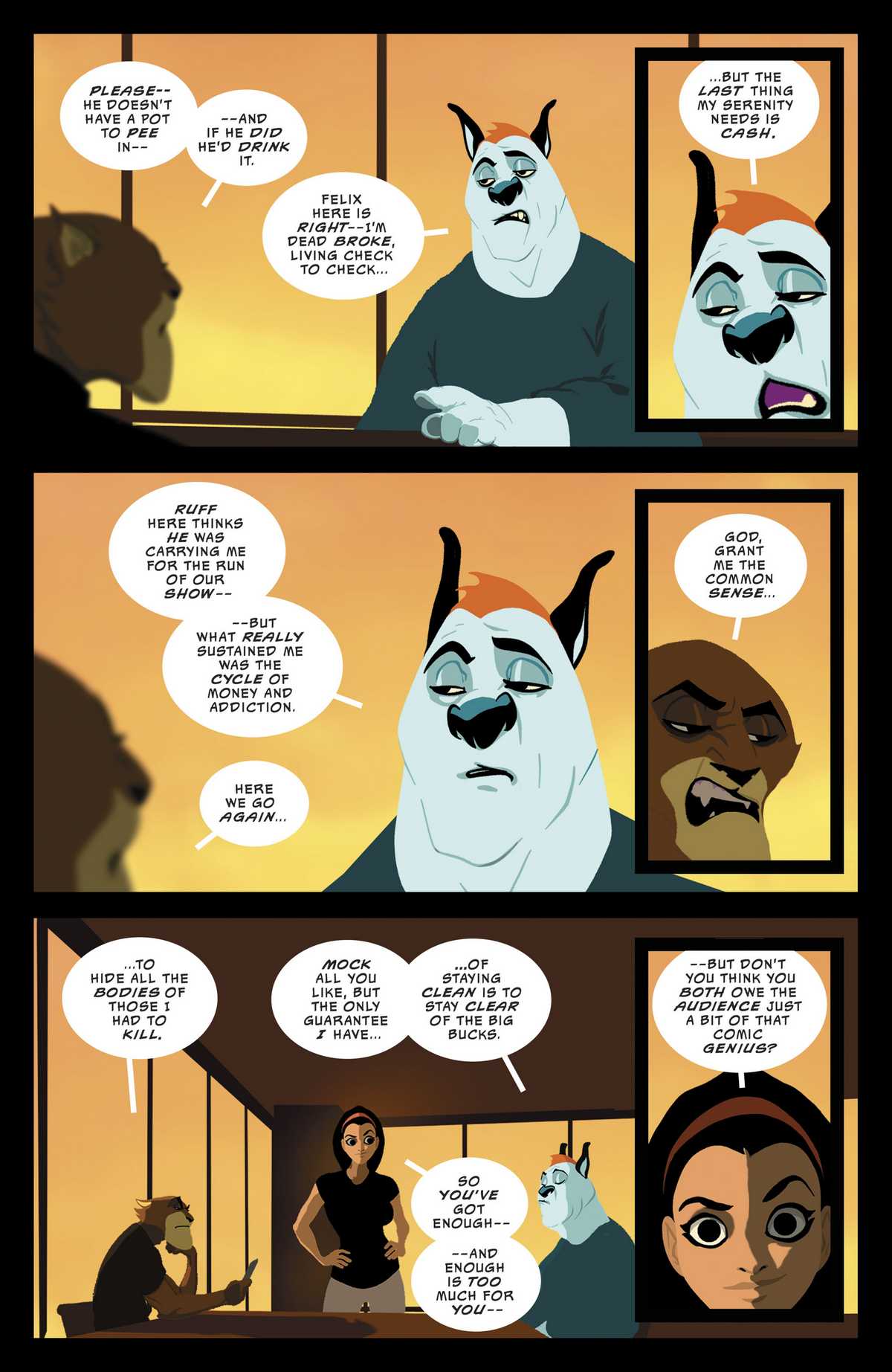
The Ruff and Reddy Show comic series incorporates darker thematic material than the original goofiness of the heartwarming cat and dog cartoon. Now a retired actor, Ruff is a cat full of avarice, spewing profanity at every turn. Meanwhile, Reddy the dimwitted dog struggles to recover from his alcohol addiction. The two also exist in a Bojack Horseman-like world where animals and humans cohabitate. Known by humans as ‘celimates,’ the anthropomorphic animals scuffle against a racist society. Ruff and Reddy struggle to achieve gravitas as both celimates and forgotten actors.
The vivid, pop-art style inked by DC artist Mac Rey gorgeously heightens the appeal of The Ruff and Reddy Show. In particular, The Ruff and Reddy Show #4 showcases Ruff and Reddy’s comeback in various sitcoms through vibrant panels that move down the page like movie scenes. Tonally, the shadow and sunset art vibrantly emphasizes thematic material in each issue. The Ruff and Reddy Show‘s darkly comedic social commentary on cultural amnesia and shifting dynamics in the entertainment business will especially intrigue any film buff.
Future Quest (2016)
The 1964 cartoon, Johnny Quest, remains a memorable Hanna-Barbera classic cartoon series. Aside from Space Ghost, you may only have vague memories of Hanna-Barbera cartoon sitcoms like Frankenstein Jr. and The Impossibles (1964) and The Herculoids (1967). Hanna-Barbera Beyond brings all the adventure/science-fiction characters into the Johnny Quest universe in the Future Quest (2016) comics. The villain in all twelve issues of Future Quest is world-threatening and quite terrifying. Thus, the Space Force must join together with the Quest gang to save Earth from destruction.
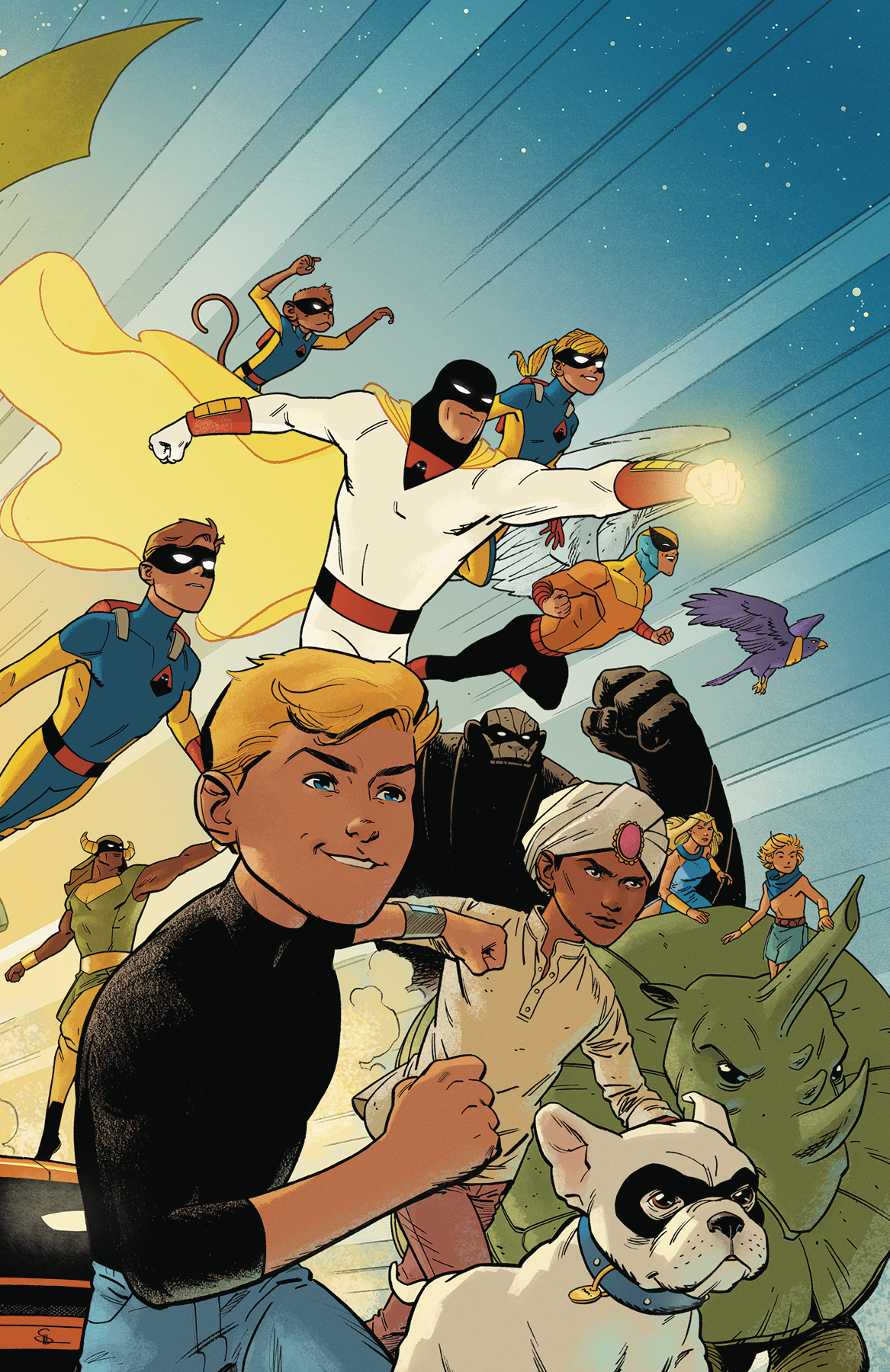
Writer Jeff Parker fabulously creates the ultimate crossover team-up by combining intergalactic Space Force members with Earth characters like Birdman and The Impossibles. The original Mightor makes an appearance, utilizing a time-traveling thematic element. A young Black pre-teen named Ty adds diversity to the cast after Mightor’s club imbues Ty (and his cat!) with Mightor’s powers in the present-day narrative. Recurring Johnny Quest villain Dr. Zin and the F.E.A.R. terrorist organization prove themselves as worthy adversaries to Dr. Quest, Race, and his crew in this Hanna-Barbera Beyond comic.
Even further, Parker wonderfully merges space and Earth together by introducing a disgusting intergalactic antagonist. Dubbed “Ominkron,” the creature destroys ecosystems and feeds on planet life sources. The art style retains its kitschy, 50s pulp quality that emulates the realistic character designs in Johnny Quest. Artists Ron Randall, Craig Rousseau, Steve Rude, and Evan “Doc” Shaner illustrate Omnikron with disturbingly grotesque detail. While much more kid-friendly than say, Wacky Raceland (2016), Omnikron’s appearance and his immense powers could place Future Quest into a subtly dark horror genre.
The Flintstones (2016)
Like Scooby-Doo, Where Are You?, the Hanna-Barbera cartoon Flintstones family received the movie treatment before the Hanna-Barbera Beyond comic launch. The Flintstones (2016) comics insert Stone Age inhabitants Fred, Wilma, and their friends into a Stonepunk setting. This reboot imagines Fred Flintstone as a kinder, more empathetic man attuned to Wilma’s needs and feminist pursuits. Though the word ‘dystopia’ may not attribute itself to this world, The Flintstones uses the Stone Age backdrop as satire to highlight uncomfortable topics — like war and animal abuse — we face in modern society.
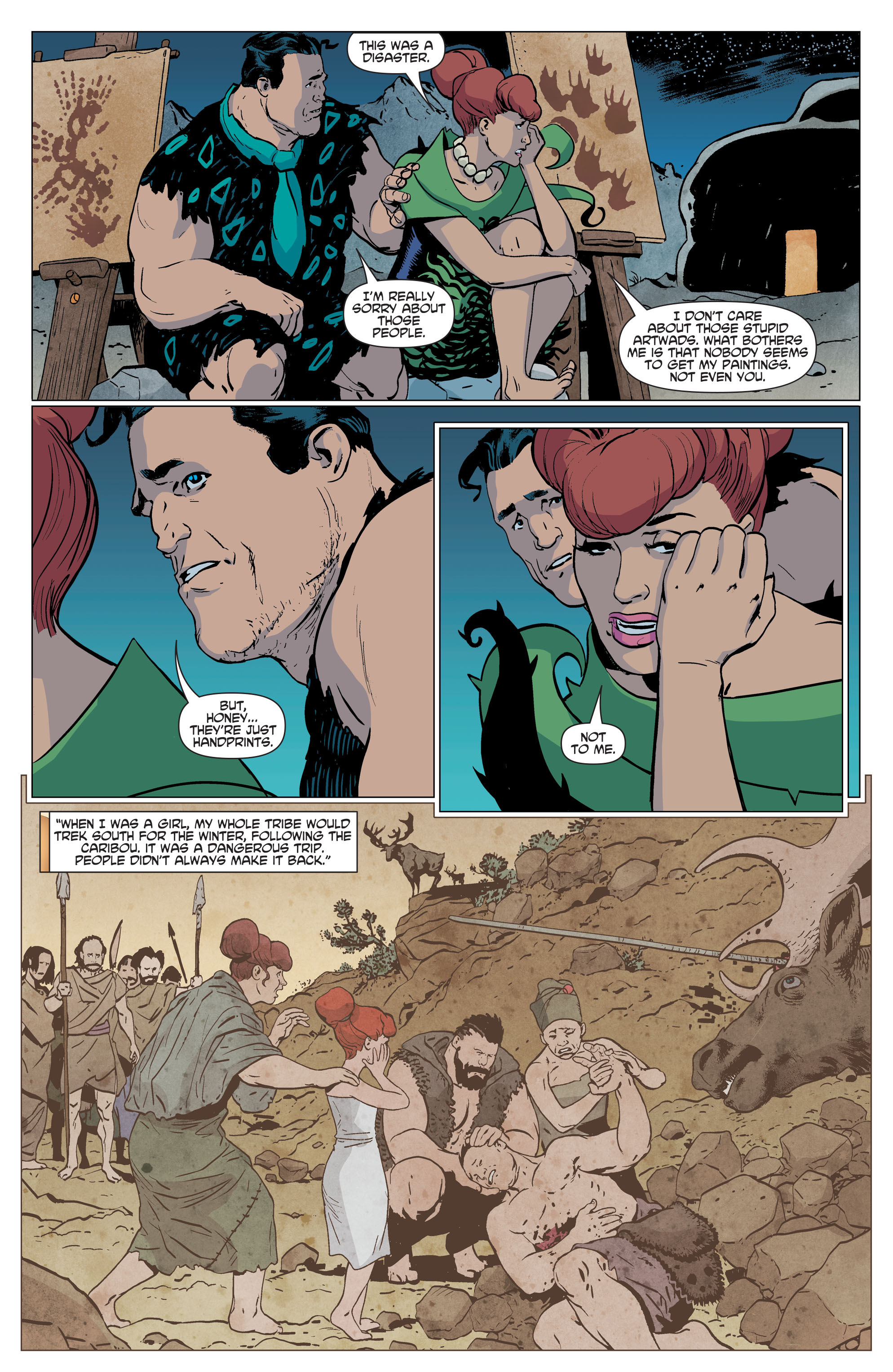
Mark Russell, the writer of this social satire, uses carefully crafted dialogue to formulate a discourse around 21st-century religion, marriage, and modern consumerism. Civilization’s dark origins are grimly depicted in sepia tones. Fred and faithful friend Barney Rubble are war veterans, attending weekly meetings and watching their friends’ mental health spiral downward as victims of post-traumatic stress. Poignantly, one of the most startling B-plots of The Flintstones appears in the form of a relationship between sentient animals: An armadillo ‘bowling ball’ and an elephant ‘vacuum cleaner’ tucked away in the closet discuss how the humans use them for their own selfish purposes. Issues #7-12 resolve the storyline — and it is tragic. Warning: you may cry.
Artist Amanda Conner‘s character designs emulate the live-action actors in Universal Pictures’ 1994 The Flintstones film. The realistic art in the first six issues of the twelve-issue run boasts a soothing color palliate and perfectly captures the micro-expressions of each character. The titular Great Gazoo takes on a hyper-realistic human form and candidly exposes the true nature of the Bedrock humans. The Flintstones comic series still retains the original cartoon’s humor while frighteningly confronting your frame of reference on the questionable, capitalist customs of the world we live in today.
Exit Stage Left: The Snagglepuss Chronicles (2018)
Hanna-Barbera first introduced Snagglepuss as an orange-furred background character named Snaggletooth on 1959 The Quickdraw McGraw Show. Snagglepuss was eventually given the spotlight on segments of 1961 The Yogi Bear Show cartoon. Here, the theatrical Snagglepuss transformed into a pink, anthropomorphic cougar. In 2017, the Hanna-Barbera Beyond comic initiative ended with the GLAAD award-winning The Snagglepuss Chronicles: Exit Stage Left (2017). The Flintstones comic writer Mark Russell utilizes Snagglepuss’s affinity for theatrics from the original cartoon and reinvents the pink cougar as a gay, 1950s playwright.
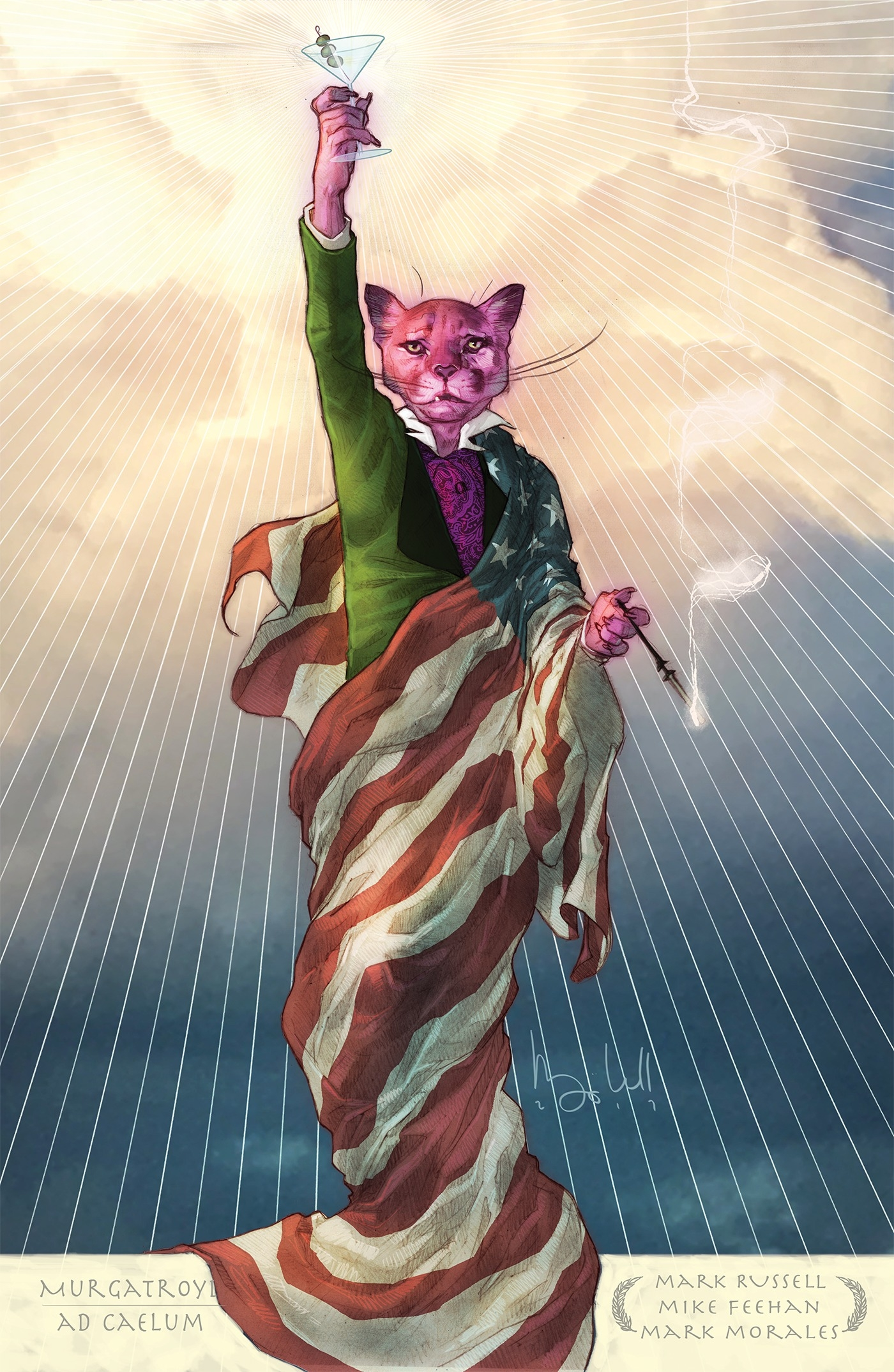
Each of the six issues highlights how Snagglepuss faces different repercussions of McCarthyism and the presence of communism in the United States. Other Hanna-Barbera characters like Huckleberry Hound and Quickdraw Mcgraw are given narratives that further showcase how behavior deemed “subversive” was treated in a 1950s America. Rooted in historical events, Snagglepuss’s dialogue is masterfully written. The comics convey the hardships and dark secrets harbored by those who didn’t conform to strict societal standards. An ominous feeling of fear for Snagglepuss and his friends permeates the dark thematic material in Exit Stage Left.
While animals intermingle with humans, similar to The Ruff and Reddy Show (2018), artist Mike Feehan draws Snagglepuss with strikingly human features. All of the animals are meant to emulate human characteristics, although Snagglepuss and Huckleberry Hound are often found pants-less as they walk along the streets of New York. The intensely human appearance of Snagglepuss might be initially distracting for some readers, but you grow accustomed to the unique character designs after reading the first issue. This gorgeously illustrated comic inserts the quirky character of Snagglepuss into an important historical era. Exit Stage Left: The Snagglepuss Chronicles provides a discourse, embedded in disturbingly real events, with the utmost tact.
Deep-Dive Into Hanna-Barbera Beyond Comics
Hanna-Barbera cartoons aren’t most people’s go-to binge-watch, but you might find yourself up late reading these Hanna-Barbera Beyond comics. Despite some of the strange storylines, all of these darker themed comics will appeal to horror fans and general comic fans alike. Don’t worry if you don’t know the original cartoon characters that well. The Hanna-Barbera Beyond comic initiative reimagines the old characters, strengthening the flaws and character traits of their original personalities. Immerse yourself in this dystopian comic universe: You won’t be disappointed!
